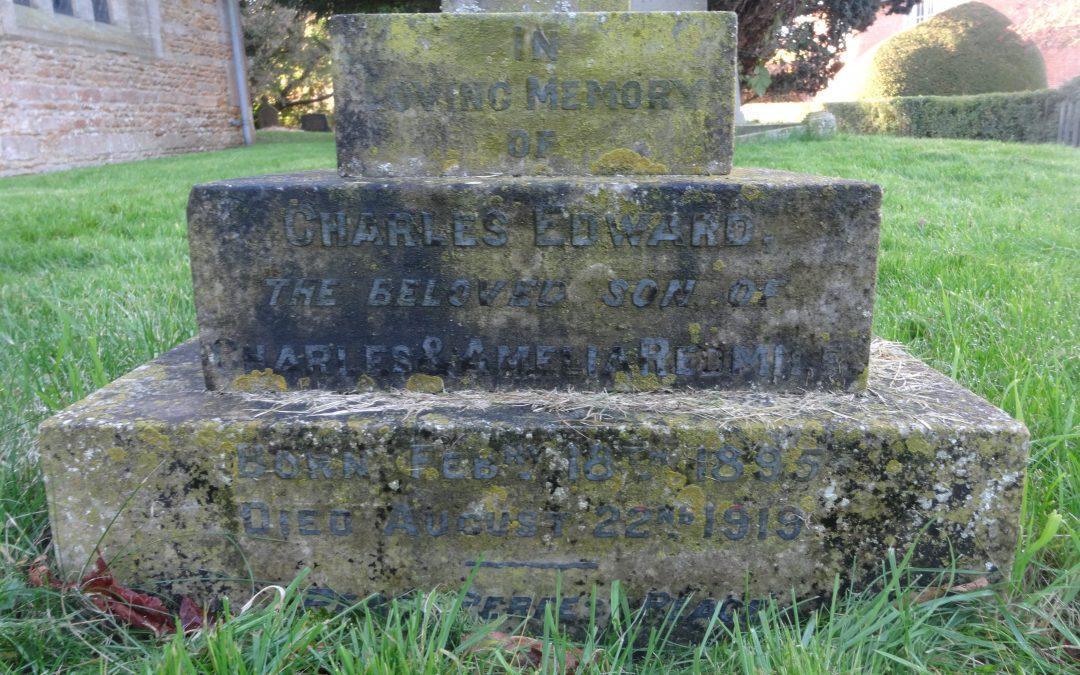
Remembrance – Charles Edward Redmile
Commemorated on the Dunsby War Memorial and buried in Dunsby.


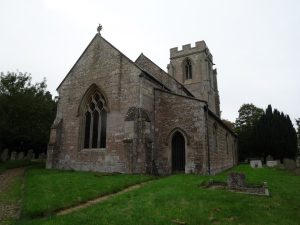
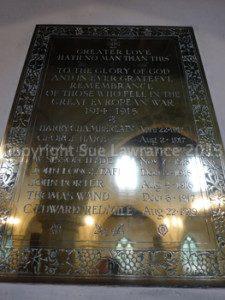

Commemorated on the Dunsby War Memorial and buried in Dunsby.




Today we commemorate the 100th anniversary of the death of Thomas Wand of Dunsby and the 2nd/5th Battalion Lincolnshire Regiment.
Thomas was born in Dunsby in the summer of 1894 to John Joseph Wand, born in Morton, a farm labourer and his wife Mary Ann Grange Vickers born in Bourne. They were married in 1891 and lived in Bulby before settling in Dunsby. They had 13 children although sadly they lost 3 of them before 1911.
Thomas had moved away from his parents before 1911 and was living with the Haresign family in Pinchbeck working as a horseman on the farm.
Thomas enlisted into the army and was posted into the 7th Battalion Lincolnshire Regiment but at some point was posted to the 2nd Battalion Lincolnshire regiment. As the dates are not known then it is difficult to say exactly which actions Thomas was involved in other than the final action that cost him his life.
In early December 1917 the 2nd Battalion was in the line at Bourlon Wood and an extract from the Battalion Diaries describes Thomas’ last days.
3rd December 1917 – Bourlon Wood
Enemy Machine Gun fired at intervals throughout the night. We suffered 2 casualties
4th December 1917 – Bourlon Wood
Enemy activity again confined to artillery fire. In order to reduce the salient of which our line forms part, a withdrawal was carried out to the Flesquires Line. Pack ponies and limbers were brought up and ammunition and stores were removed before the withdrawal commenced. The withdrawal was made from the left by platoon. One platoon remained behind in the centre company’s frontage to cover the withdrawal. The first company commenced the withdrawal about 9:45pm and it continued in good order platoons moved independently across country to Flesquieres and took up their allotted position in the Flesquieres line. The enemy seemed totally unaware of the withdrawal. There was no fire from the artillery beyond the ordinary routine firing on the right. The withdrawal was concluded in good order, without casualties and dispositions taken up at Flesquieres as follows.
The existing trenches N and NW of Flesquieres between the limits K.18b.2.2 and K.17 d.8.6 were held by A and B companies with C and D companies in support in the support line about K.24 Battalion HQ in dugout K.24.a.1.b.
No signs of the enemy following up were observed until about 3.0pm when motor lorries were seen in Fontaine-Notre-Dame and small bodies of enemy were seen in neighbourhood of Bourlon Wood. Our front was with two Companies of the 2/4th Lincolns. At night we commenced digging.
5th December 1917 – Flesquieres
A new front line trench running from K.18.a.70.45 to K.17.b.8.5 thus bringing the front line up to the advanced posts of the 1/6th london Regiment on our left. On the right were the 2/5th Leicester Regiment. This new front line trench was dug to 3’6 and occupied by seven lewis gun posts. During the digging the enemy shelled continuously inflicting bout a dozen casualties. Captain H N Newsum was sent down suffering from shell gas.
6th December 1917 – Flesquieres
3.0pm – Our outpost line fell back on our front line trenches and an enemy attack developed. The brunt of the attack fell on the 2/5th Leicester Regiment on our right and no enemy came up against our trenches although we were able to bring fire to bear on those advancing against the right Battalion. Enemy shelling was heavy and we sustained some twenty casualties.
Patrols were sent out to battalion on the right and left to keep in touch. Communication difficulties owing to enemy shelling.
8.0pm – Work was continued on the new front line commenced last night and a new communications trench commenced from K.18a.3.5 to K.18c.2.8. This trench was dug 3 feet wide and 3’6 deep during the night. Fighting patrols were sent out during the night to prevent the enemy reconnoitring our line and to prevent him from digging in near our line. Harassing fire by artillery and machine guns was arranged during the night to prevent the enemy digging.
Lieut Garrad sent down suffering from effects of shell gas.
Although no men killed or missing are mentioned specifically, we have to assume that Thomas Wand was killed during this period, most likely from shelling by the enemy either during the withdrawal or the artillery fire on the digging parties.
Commonwealth War Graves:
In memory of Thomas Wand, 21543 2nd./5th battalion Lincolnshire Regiment who died on 6th December 1917. Son of J J Wand of Dunsby Fen, Bourne, Lincs. Remembered with honour, Orival Wood Cemetery, Flesquieres.


Lest we forget.

Today we were privileged to be visiting the Menin Gate to remember George Henry Hare of Dunsby who was killed exactly 100 years ago on this date, 31st July 1917, on the first day of the Battle of Passchendaele. George being the author’s Gt Gt Uncle.
George was born in Dunsby, Lincolnshire, in the summer of 1895, to John Hare, a farm Horseman born in Wigtoft and his wife Sarah Sharpe born in Pinchbeck. John and Sarah were married in 1882 and had 12 children, unfortunately loosing 3 of their children before 1911.
Their married life started in Pinchbeck, quickly moving to Quadring and eventually settling in Dunsby in 1884 where their remaining children were born.
Mary Jane Hare, 1882, Pinchbeck
Elizabeth Hare, 1883, Quadring
William Sharp Hare, 1884, Dunsby
John Hare, 1887, Dunsby
Charles Hare, 1888, Dunsby
Walter Hare, 1890, Dunsby
Alice Hare, 1892, Dunsby
George Henry Hare, 1895, Dunsby
Ethel May Hare, 1896, Dunsby
George found work as a farm labourer and was living at home in Dunsby fen aged 16 in 1911.
George enlisted into the army in Bourne and was posted to the 15th Battalion Sherwood Foresters (Notts and Derby Regiment). This was a bantam Battalion made up of men under 5 feet 3 inches typically from mining or agricultural backgrounds. Although they were ordered to Egypt in late 1915, this was cancelled and their first overseas posting was in February 1916 to France where the Battalion fought in the Battle Somme
George was posted to the 16th Battalion Sherwood Foresters, although it is not known exactly when this occurred. Typically a wounded soldier would upon regaining fitness, after a period of time, be posted to a Battalion where they were most in need of replacements.
We can be sure that George was with the 16th Battalion in his final month as their diary mentions a new draft on the 15th June but none since.
The 16th had move from the Ancre area of France in November 1916 into the Ypres Salient. Here they remained until the end of June 1917 when they were moved from the Hilltop Sector near the Ypres-Yser Canal, to Northern France. Once in Serques the Battalion underwent training in preparation for the big attack planned for the Ypres Salient.
On the 21st / 22nd of July George along with his 16th Battalion, were moved by Motor Lorries and Motor Busses close to Poperinge and then marched to a rest camp near Wornhoudt. They remained bivouaced here until the 27th July.
The next day they were moved back to their old stomping ground of the Hill Top Sector relieving the 6th Lincolnshires.
The following is an extract from the Battalion Diary describing their movements in the lead up and on the first day of the Battle of Passchendaele.
30th July – Hill Top Sector
The Battalion Assembled in our own front line trenches to assault the German Trenches and capture their front line system. A Company on the right front and B Company on the left front wire detailed to capture and consolidate the German front (red) and support (yellow) lines. Whilst C Company on the left passed through and went forward to capture and consolidate the German reserve line (Blue and Dotted Blue lines). The 11th battalion, the Royal Sussex Regiment were on our right and 17th Battalion King’s Royal Rifle Corps on our left.
31st July – Hill Top Sector
At 3.50am the artillery barrage opened and our four lines advanced to get as close under it as possible. The men followed closely and the objectives assigned to the Battalion were secured with little difficulty by A Company commanded by Captain C G Lord, B Company commanded by Captain P H Coleridge, C Company Commanded by Captain L H Askwith and D Company by Lieutenant T C O Williams.
The enemy held these trenches lightly and only put up a weak resistance. During the advance the Battalion captured 120 prisoners and 2 machine guns. Advanced Battalion Headquarters were established in Camphor Trench (Reserve Line) and the consolidation of the Dotted Blue Line commenced.
At 8.30am A Company was withdrawn for work under the 227th Field Company Royal Engineers for road construction.
During the day the greater part of the Battalion was employed in carrying forward the Brigade dump and carrying forward SAA bombs, wire and water to the 17th Battalion Sherwood Foresters and 16th Battalion Rifle Brigade who had captured Kitchener’s Wood and the trench system up to the River Steenbeek.
At 4.30pm C Company was sent up to reinforce the 17th Battalion Sherwood Foresters and came under command of the Officer Commanding that battalion. One Platoon of this Company was sent forward to the line of the River Steenbeck.
About 9pm B Company was similarly sent up to reinforce this line 2nd Lieutenant A S Mellor was wounded whilst conducting a camping party to Kitchener’s Wood.
At some point between Assembling in Hornby and Forward Trench at Zero minus 3 and the end of the first day of the Battle of Passchendaele (3rd Battle of Ypres), Private George Henry Hare was killed in action.
Commonwealth War Graves Commission:
In Memory of Private George Henry Hare, 33949, 16th Battalion, Sherwood Foresters (Notts and Derby Regiment) who died on 31 July 1917 Age 21.
Remembered with Honour Ypres (Menin Gate) Memorial
Panel Ref: Panel 39 and 41
George is also commemorated on the war memorial in his native Parish Church in Dunsby, Lincolnshire.
“their name liveth for evermore”

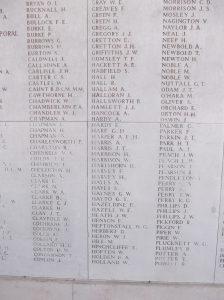

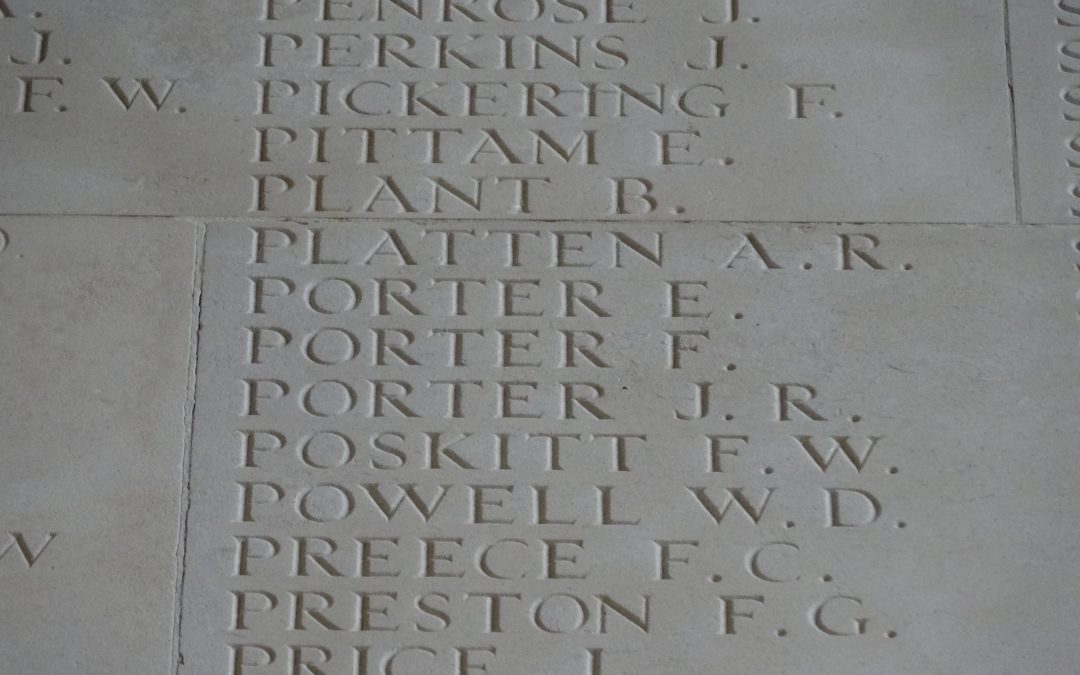
Today we will be remembering one our local soldiers that paid the ultimate price in the name of King, Country and Freedom.
100 years ago today, the 5th August 1916, John Robert Porter was killed in action during the battle of the somme whilst serving with the 10th battalion Lincolnshire regiment.
In Memory of Private John Robert Porter, 1406, 10th Battalion Lincolnshire Regiment who died on 5 August 1916 Age 20.
Son of Mr R Porter of Dunsby, Bourne, Lincs
Remembered with Honour Thiepval Memorial and Dunsby Memorial
We will remember them.
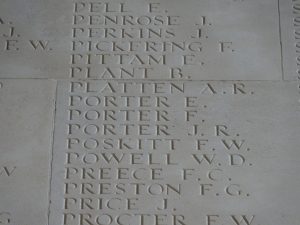

Recent Comments